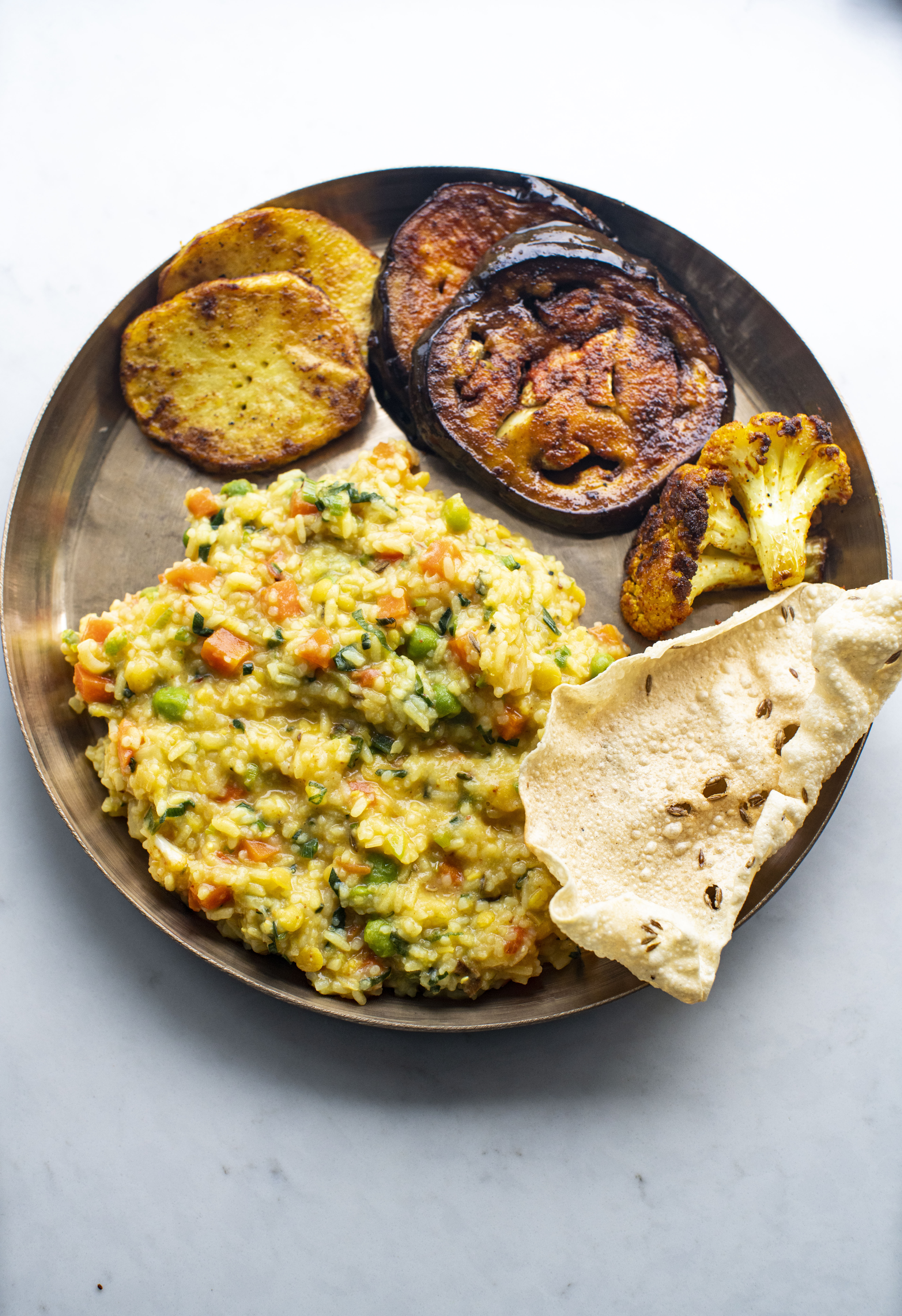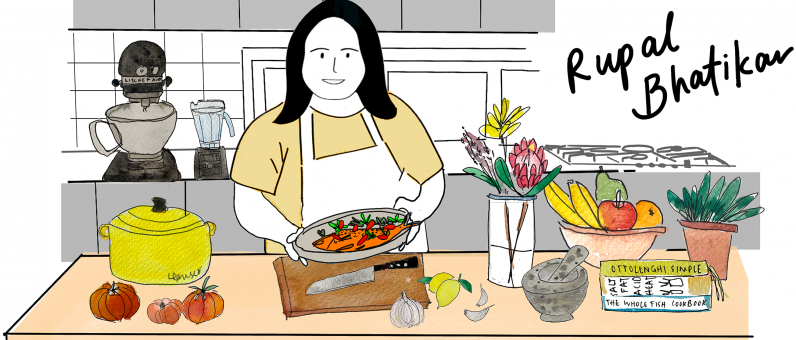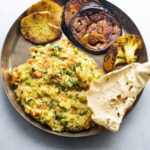There isn’t a gentle meal that will satisfy your soul quite like an Indian rice lentil khichdi that is endlessly customisable and nourishing.

Khichdi is essentially an Indian-style vegan rice and lentil congee. The choice of rice or lentils can be changed to suit what you have in your pantry. Try to use shorter grain rice varieties (Sona Masuri / Indrayani), but if Basmati rice is all you have, by all means go for it! Heck, I have even used jasmine rice in a pinch and it worked just as well. I love making my rice lentil khichdi in a 3:1:1:1 ratio of short grain rice to toor, split masoor and mung dal. I find that the different cook times of the dals and flavours add greater dimension to the final result. Masoor dal breaks down fastest so it adds body, the yellow mung dal adds a nuttiness and the toor dal helps add texture so you don’t end up with mush.
Customise your Khichdi
What vegetables you have on hand, that’s what you play with. I almost always add a combination of carrots, cauliflower, green beans or frozen peas. Sometimes I’ll even add a handful of baby spinach or kale or Swiss chard for some greens. Additionally, a generous ghee tadka (tempering) is a must – a few spices, asafoetida and some alliums (garlic/shallot/onion or spring onions). If vegan, use oil to temper.
The real highlight of a rice lentil khichdi are the sides. Endlessly riffable and totally personal. I always try to have something pickled ( either crunchy pickles or spicy Indian style ones like this or even chilli oil), a side of spiced and fried potatoes, eggplant & cauliflower florets. Feeling extra? Go make those crispy pakoras! If you feel like some seafood (which I do 99% of the time) – you could make this crispy prawn koliwada or these fish pakoras too! Extra points for a crispy papad.
A perfect rice lentil khichdi – could there be a comforting plate of food?
Rice Lentil Khichdi
Ingredients
- 1 cup White Rice (long or short grain)
- ⅓ cup Toor Dal (split pigeon pea)
- ⅓ cup Masoor Dal (red lentils)
- ⅓ cup Yellow Mung Dal (skinless petite lentils)
- 1 cup Mixed Vegetables (cauliflower, carrots, peas – chopped bite size)
- 4-5 cups Water (see notes)
- ¼ cup Tomato (chopped)
- ½ tsp Turmeric Powder
- Salt (to taste)
For the Tadka (tempering)
- 2 tbsp Ghee (use oil if vegan)
- 2 Garlic cloves (thinly sliced)
- ¼ cup Spring Onion or Shallots (thinly sliced)
- ¼ tsp Cumin Seeds
- ¼ tsp Mustard Seeds
- ¼ tsp Fennel Seeds
- ¼ tsp Nigella Seeds
- ¼ tsp Fenugreek Seeds
- ¼ tsp Asafoetida (heeng)
Instructions
- Combine your rice and all the lentils in a bowl. Add water and mix around to wash thoroughly. Repeat this exercise 3-5 times until the water runs clear. Then add fresh water and let them soak for at least 2-3 hours.
- In a heavy bottom pot, add the rice, lentils and 4 cups of water along with salt and turmeric powder. Bring it to a boil on a medium flame and then turn it to low to cook. Adjust with hot water to a desired consistency. You can use the back of your wooden spoon to gently mash the khichdi to get a creamy result.
- In the final ten minutes of cooking, add the mixed vegetables and let them cook in the khichdi along with the rice and lentils.
- When the vegetables are fully cooked, adjust with hot water to your desired consistency ( see notes) and turn off the heat. Add the chopped tomatoes, they soften just right in the residual heat.
- In a separate pan, heat the ghee (use oil if vegan) for your tadka. Add your whole spices, asafoetida, garlic and spring onions and let them sizzle and frizzle. Cook until they have a bit of colour and no longer taste raw. Add into the khichdi and mix. Let it rest for 15 minutes before serving.
- Best served with a side of crispy papad, pickle and or spiced oven roasted or pan fried vegetables (potatoes or eggplants particularly, but even cauliflower is great).
Notes
- The quantity of water you will use depends entirely on your personal textural preference while eating as well as the type of rice (long or short grain) used. Adjust as needed. If adding more water during later stages of cooking, always add hot water instead of cold.
- The combination of whole spices used for the tadka (tempering) is an Indian five spice blend ( called Panch Phoron) and uses cumin, fenugreek, black mustard, fennel and nigella seeds in equal proportion.
For other delicious recipes from the blog, click here. If you make this recipe and love it, let me know in the comments below. If sharing on Instagram, tag me @rupalbhatikar.


Leave a Reply